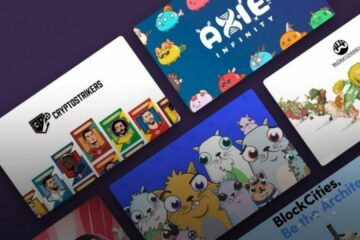NFTs (non-fungible token) and art will benefit from each other.
Now that blockchain is being used in the art market, it has become easier for collectors to have full transparency over their purchases. If you are looking for a way to get into the world of art collecting without investing too much money yet, this could be the perfect opportunity for you! Here are some details:
What is a non-fungible token (NFT)?
NFTs are programmable tokens which can be attached to any digital or physical item– even fine art. What’s so special about them? Their value is not derived from their monetary worth, but rather what they represent to the owner. For example, a Limited Edition Collector’s Coin could have a NFT token that represents how many coins were minted and where the coin was minted. That way someone could own a 1/1000 coin just by owning a 1/1000 of a non-fungible token.
How will NFTs affect the art world?
In our opinion, NFTs have potential to create new revenue streams for artists and collectors alike over time as the NFT market matures.
The first revenue stream will be a reduction in art forgery and fraud as different grades of authenticity could be issued. NFTs could also update the art appraisal process by placing a higher value on pieces that have been verified with a token, as opposed to those that haven’t.
A third possibility is the integration of blockchain into auctions where people can bid using cryptographically-signed bids which can later be used as proof that they participated in the auction should any questions arise about bidding legitimacy.
In our opinion, it’s only a matter of time before someone combines AI and NFTs to create a digital assistant you can talk to who will help you find artwork tailored specifically to your taste and budget! We’re excited to see what types of new technology will be integrated in the future and how it will affect art and NFTs.
Who can benefit from using NFTs in their artwork?
Artists, collectors, and even companies could benefit from incorporating NFTs into their artwork if they desire to take advantage of these aforementioned features. Cryptokitties was one example where artists were able to sell unique (non-fungible) copies of their digital art by attaching a crypto token to each piece which served as proof of ownership.
You might see an NFT and think, “Meh. That’s just like any other digital token.” But what you fail to realize is that each one of these items has the potential to gain value if it becomes more rare or has a different use case than another similar item. This makes them much more interesting as collectibles since not only do they hold monetary value based on their rarity, but they also have unique features and benefits that can’t be replicated by other NFTs.
One issue with digital art right now is that there isn’t real ownership over anything– once you delete something it’s gone for good because there is no verification that you actually own anything in the first place. Once blockchain enters the picture however, every transaction is recorded and kept in a public ledger. This can help artists protect their work from being stolen and add value to the art they produce since there will be proof that each owner bought that art at a certain time or price.
How much money do I need to get started with NFTs?
Fortunately, you don’t need much money at all to start collecting NFTs! There are many projects out there like Cryptokitties and CryptoCelebrities where anything under 1 ETH could secure your ownership of an NFT item (less than $300 right now).
If you want something rare but more expensive, then single-digit transactions for ERC721 tokens have already been done on auctions before so it’s possible to obtain any NFT for under $1000.
Just like any other form of art, some pieces are worth more than others according to how rare or sought-after they are by collectors. The same is true with digital NFTs– popular breeds of kitties often sell for over 10 ETH, so it might take years before you can collect multiple pieces if you don’t have a few hundred dollars saved up.
How do I actually use the tokens once I own them?
The easiest way to store your NFTs is in websites like MyEtherWallet where you can send and receive tokens thanks to ERC20 compatibility with most projects that use non-fungible token technology. You will also be able to use the tokens with companies that are integrating blockchain into their platform since most of them are building off of Ethereum.
NFTs can be traded on exchanges like IDEX and EtherDelta that allow you to send your tokens in return for another cryptocurrency or ETH itself. If you’re looking for a 0-fee way to trade, then 0x is also a great option since they provide interoperability between different types of ERC20 compatible tokens and not just NFTs themselves.
As we mentioned before, some NFTs can be used in more than one way which means there’s more room for innovation and creativity when it comes to artwork and how we collect it! Since CryptoKitties is made up of cryptographically unique cats, you will be able to breed them with other cats in the future if more people start acquiring these kitties. This game-like feature is something that has never been attempted before on a blockchain platform and it’s possible thanks to NFTs.
Can I make money with NFTs?
Most tokens can increase or decrease in value based on how many people are trading it, what they’re trading it for, and how much demand there is at any given time. You might look at them as investment vehicles but don’t expect huge gains overnight since you’ll need some patience when it comes to collecting anything rare – crypto collectibles included!
Consider cryptocurrencies like Ethereum as an alternative investment vehicle since these tokens often times don’t have a high return on investment (ROI) if you use them with NFTs. So, just like most other art forms, NFTs will likely become more valuable the older they get and the more rare they become since there is no limit or cap on how many can be produced or bought by collectors.



0 Comments